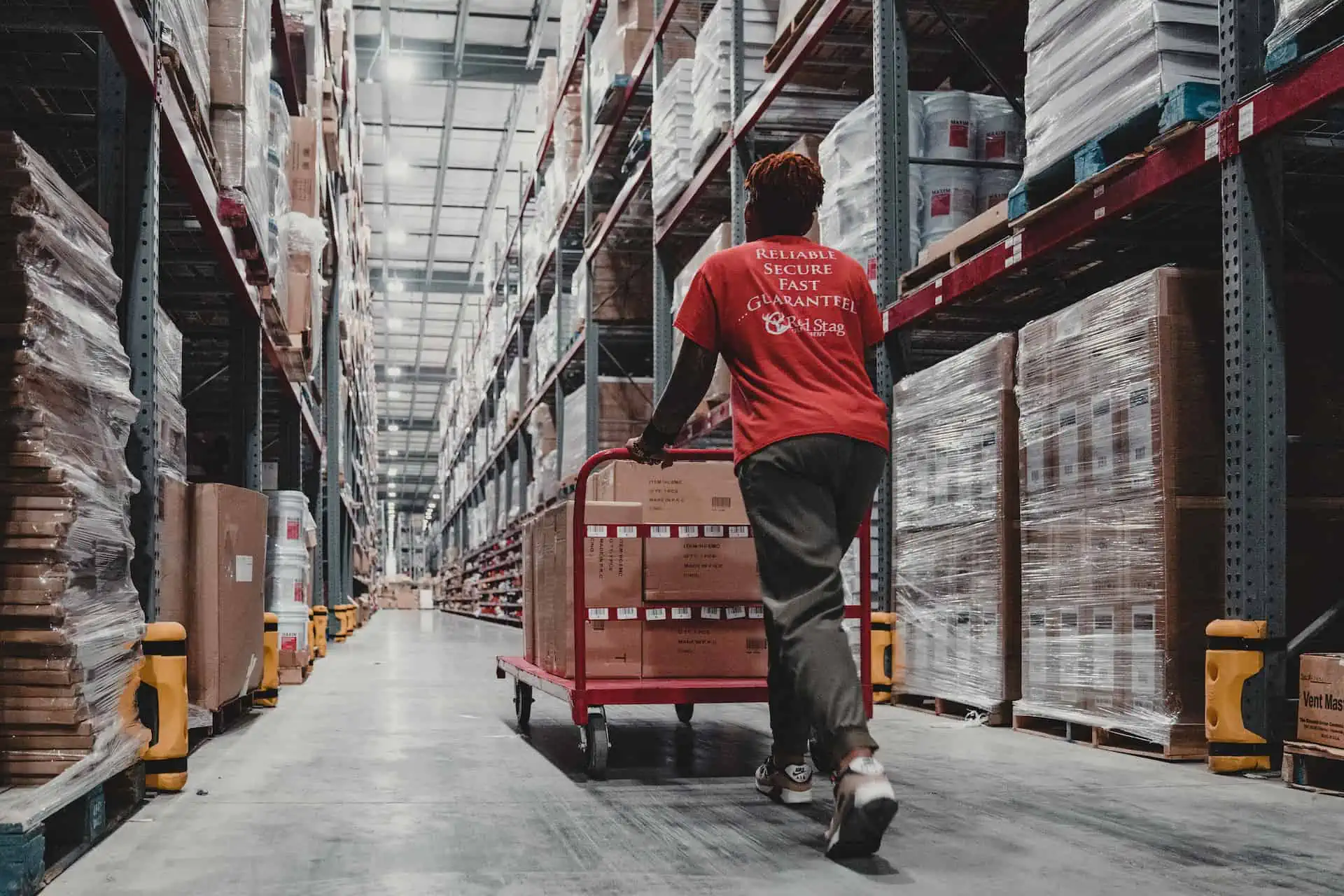Looking for a Georgia 3PL for order fulfillment and logistics?









At Red Stag, we help brands in Georgia (and beyond) efficiently fulfill to the United States (and beyond).
But there’s a twist: for most ecommerce brands, Georgia is a less-than-optimal place for a 3PL.
Scroll down and we’ll show you why.
You probably shouldn’t have a 3PL in Georgia.
That might sound strange.
After all, Georgia has some nice benefits:

Port of Savannah is one of the fastest-growing on the East Coast.

Lower costs vs. Northern states in labor/real estate.
Score 2 points for a Georgia 3PL, right?
Maybe. But consider total cost of fulfillment.
Port proximity and customer location are just two pieces of a much bigger puzzle.
Here are some other important factors:

Atlanta traffic
Congestion can delay shipment pickups and deliveries.

High humidity
Storage requirements may demand climate control.

Severe weather
Tornadoes/hurricanes can strike certain areas.

Rural infrastructure gaps
Less-developed roads outside metro hubs.
Even if it’s not your warehouse,
your 3PL is paying these costs, and passes them straight to you.
At Red Stag, we don’t have a Georgia location.
Instead, we’re a 3PL laser-focused on two things:
minimizing your total fulfillment costs and delivering exceptional customer experiences nationwide.
There are exceptions to our you shouldn’t be in Georgia statement, of course.
But for most brands looking to optimize for total cost of fulfillment while hitting 2-day delivery nationwide, our two strategic inland locations in Salt Lake City and Knoxville deliver better results.
Our Locations
Select one (or both) of our strategically placed warehouse locations to see our reach.
Red Stag intentionally has only two locations.
See why that could be better for your brand.












The Red Stag difference
3PL Georgia and nationwide

2-day shipping
Reach 96% of U.S. homes within two days.

100% accuracy
Fulfillment done right. Backed by guarantees.

0% shrinkage allowance
Because any loss is unacceptable.
Georgia fulfillment center services

Warehousing
Keep product availability and turnover high with “dock-to-stock” receiving in two days or less. With the right locations and our inventory accuracy guarantees, you can lower storage costs.

Order fulfillment
Fulfill orders accurately and efficiently from any sales channel. Consolidated inventory streamlines fulfillment for fast processing that meets customer expectations.

Shipping
Ship packages across fewer zones for lower costs. Shorter distances reduce the opportunities for costly delays, too. At scale, the savings can free up enough cash for you to invest in growth.

Kitting & assembly
Increase opportunities for sales and customer loyalty. With the right inventory in the right location, you can offer subscription boxes, bundles, upsells, and other promotions.

Inventory planning
Focus on growth with sales and transportation insights. Optimized inventory planning helps you place precise orders, maximize pricing, and keep cash flow healthy.

Amazon fulfillment
Get the support you need for Amazon’s Seller-fulfilled Prime program. We’ll help you stay compliant with the marketplace’s rules and capture the opportunities it offers.
What customers say about
Red Stag fulfillment services
Building your
fulfillment networks
Strategically located warehouses lead to faster fulfillment services for more customers without straining your resources. From Red Stag’s warehouse locations, you can reach 96% of U.S. homes within two days. Partner with us to efficiently route your products from any U.S. factory or port to our fulfillment center locations and onto your customers.
A client portal, with integrations available for any online retail platform, provides full visibility and digital control. View inventory, sales, and transportation data in one place for a clear picture of your business in real time. With additional insights from the Red Stag team, you can make the most of every opportunity and create a foundation for long-term business growth.
Get ready to grow
with the right 3PL
Outsourcing to a 3PL lets you turn your attention to other priorities, like identifying new customers, developing new products, optimizing your website, and building your brand.
But what if your 3PL could help you grow?
With Red Stag Fulfillment, your business can benefit from hands-on support. Our US-based team of supply chain experts offer guidance that goes far beyond pick, pack, and ship.
Get help with things like inventory management and supply chain logistics so you can better optimize order quantities, prepare for peak seasons, and manage SKUs for faster turnover. With all of your data in one place, we can help you cut costs and increase profits.
Frequently asked questions
Do I need a warehouse in Georgia?
Maybe not. Many companies find that it’s better to have fulfillment warehouses strategically located in other places for faster delivery to more customers.
That’s why Red Stag has fulfillment centers in Knoxville, TN and Salt Lake City, UT. From these central locations, you can reach 96% of U.S. homes within two days. Depending on transportation networks and customer locations, delivery from Georgia could take longer.
How many fulfillment centers do I need?
An ecommerce business that sells nationwide probably needs more than one warehouse, but too many can stretch your resources and leave you without the right stock in the right place at the right time.
Two strategically located fulfillment warehouses could be ideal for many businesses, even large ones. The right locations connect you to the geographic infrastructure you need, leading to lower storage costs and more reliable transportation.
How do Red Stag guarantees work?
Red Stag Fulfillment has guarantees you’re unlikely to find anywhere else in the industry.
We guarantee 100% of your orders will be shipped on time or we’ll cover the cost of the shipment and give you an extra $50.
We also guarantee 100% order accuracy. If we ship the wrong item or wrong number of items, we will fix the mistake, pay the shipment cost, and give you an extra $50.
Why do we pay $50? Because fulfillment mistakes hurt your business. And as your partner, we believe they should hurt ours too. This keeps our incentives aligned and makes sure we’re always working toward the same goals.
What should I consider before choosing a Georgia 3PL for my fulfillment?
There’s a lot more than just location to consider. When evaluating 3PLs in Georgia for your fulfillment operations, consider these crucial factors:
- How are accuracy and errors handled by the 3PL?
- Does the 3PL integrate with your store’s platform?
- Do they have expertise in handling your specific products?
- Are they capable of growing alongside your business?
You’ll love having Red Stag as your
3PL fulfillment solution

Find out how Red Stag can help your ecommerce business.
Get started by scheduling a quick chat.
Let’s talk



